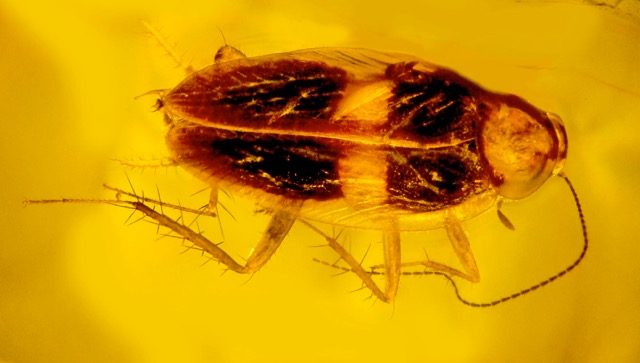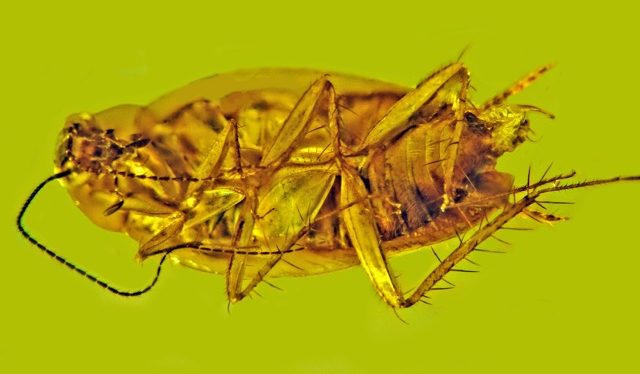PORTLAND, Ore. (KOIN) — An Oregon State University researcher has discovered an extinct, previously unidentified species of cockroach that was fossilized in amber some 30 million years ago, the university announced on Monday.
The male specimen, identified by OSU Professor Emeritus George Poinar Jr., is the first fossilized cockroach to be found with sperm cells. Poinar’s findings, which were published in the journal Biologia, also show that the roach is the only one of its kind to be discovered in amber from the Dominican Republic.

“It is well preserved with a yellow crossbar across the wings and a central, vertical, yellow stripe that appears to divide the body into two parts,” Poinar said. “It has long spines used for defense on its legs, especially the hind legs. Also of interest is the sperm bundle containing spermatozoa with dark acrosomes, structures covering the head of the sperm, since fossil sperm are rare.”
The roach is thought to have no living descendants anywhere in the West Indies and its closest living relatives are native to Africa and Asia. Cockroaches are historically resilient creatures that can survive extreme temperatures, environments and injuries, and it remains a mystery why this species went extinct.

“The difficulty in eliminating them from homes once they’ve taken up residence can cause a lot of stress,” Poinar said. “Many might say that the best place for a cockroach is entombed in amber.”
The new cockroach species is the latest of many documented scientific discoveries that Poinar has made in his career. His work with fossils preserved in amber also helped to inspire the “Jurassic Park” franchise and popularized the idea of extracting DNA from fossilized insects.
